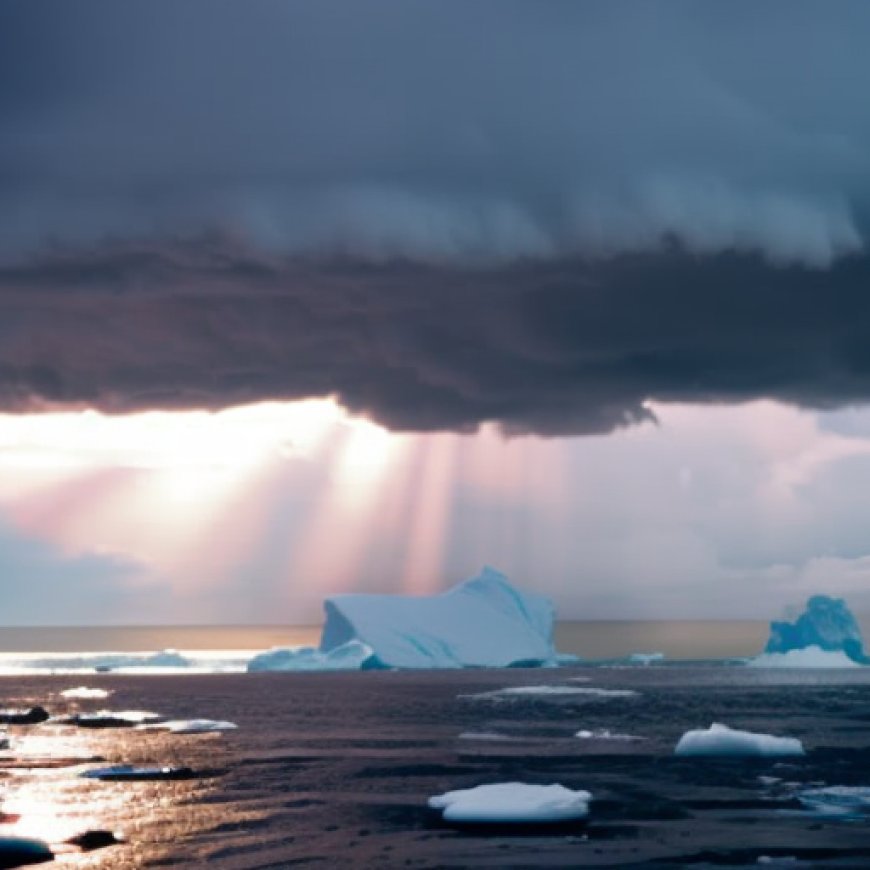Air-Ice-Ocean Coupling Observed in an Arctic Cyclone Event – Eos


Arctic Climate System and Sustainable Development Goals
Introduction
The Arctic climate system involves dynamic interactions between the atmosphere, sea ice, and ocean. However, due to the lack of comprehensive observations and analyses in previous studies, these interactions are not fully understood.
Research Findings
Watkins et al. [2024] collected a large set of observational data from stations, weather balloons, radars, buoys and performed an in-depth analysis of how Arctic sea ice and ocean responded to a strong cyclone passing over the Arctic during the winter of 2019-2020. They demonstrate that the strong wind stress of the cyclone first impacts sea ice, which consequently transfers momentum to the upper layer of ocean. It drives acceleration and circular inertial motion in the upper ocean, known as ringing, enhancing mixing at depth and prolonging the overall impact of the storm by up to several days.
Significance and Implications
This study is both timely and significant, particularly given the ongoing warming of the Arctic and the reduction in sea ice. Such studies, particularly those utilizing in situ data collected around the sea ice pack during winter, are rare due to the harsh Arctic environment. This study fills a crucial gap by providing results that significantly enhance our understanding of the dynamics of the air-ice-ocean system.
Link to the Research Paper
Citation: Watkins, D. M., Persson, P. O. G., Stanton, T., Solomon, A., Hutchings, J. K., Haapala, J., & Svensson, G. (2024). Air-ice-ocean coupling during a strong mid-winter cyclone: Observing coupled dynamic interactions across scales. Journal of Geophysical Research: Atmospheres, 129, e2024JD041057. https://doi.org/10.1029/2024JD041057
Sustainable Development Goals (SDGs)
- SDG 13: Climate Action – This research contributes to our understanding of the impacts of climate change on the Arctic climate system, which is crucial for taking effective climate action.
- SDG 14: Life Below Water – By studying the interactions between sea ice and the ocean, this research provides valuable insights into the health and sustainability of marine ecosystems in the Arctic.
- SDG 15: Life on Land – The findings of this study have implications for the conservation and management of land-based ecosystems in the Arctic region.
Conclusion
The research conducted by Watkins et al. [2024] sheds light on the complex interactions within the Arctic climate system. By providing valuable insights into the impacts of a strong cyclone on sea ice and the ocean, this study enhances our understanding of the air-ice-ocean system. Furthermore, it aligns with several Sustainable Development Goals, including SDG 13, SDG 14, and SDG 15, by contributing to climate action, the conservation of marine ecosystems, and the management of land-based ecosystems in the Arctic.
Text © 2024. The authors. CC BY-NC-ND 3.0
Except where otherwise noted, images are subject to copyright. Any reuse without express permission from the copyright owner is prohibited.
SDGs, Targets, and Indicators
-
SDG 13: Climate Action
- Target 13.1: Strengthen resilience and adaptive capacity to climate-related hazards and natural disasters
- Target 13.3: Improve education, awareness-raising, and human and institutional capacity on climate change mitigation, adaptation, impact reduction, and early warning
- Target 13.b: Promote mechanisms to raise capacity for planning and management in least developed countries and small island developing states, including focusing on women, youth, and local and marginalized communities
The article discusses the ongoing warming of the Arctic and the reduction in sea ice, which are climate-related issues. It highlights the need for comprehensive observations and analyses to understand the interactions between the atmosphere, sea ice, and ocean in the Arctic climate system. By filling a crucial gap in knowledge, this study contributes to strengthening resilience and adaptive capacity to climate-related hazards and natural disasters (Target 13.1). It also enhances education and awareness by providing insights into the dynamics of the air-ice-ocean system (Target 13.3). Additionally, the study’s focus on in situ data collected around the sea ice pack during winter contributes to capacity building in understanding and managing the Arctic environment (Target 13.b).
-
SDG 14: Life Below Water
- Target 14.2: Sustainably manage and protect marine and coastal ecosystems to avoid significant adverse impacts, including by strengthening their resilience and take action for their restoration, to achieve healthy and productive oceans
- Target 14.3: Minimize and address the impacts of ocean acidification, including through enhanced scientific cooperation at all levels
- Target 14.a: Increase scientific knowledge, develop research capacity, and transfer marine technology, taking into account the Intergovernmental Oceanographic Commission Criteria and Guidelines on the Transfer of Marine Technology, in order to improve ocean health and to enhance the contribution of marine biodiversity to the development of developing countries, in particular small island developing states and least developed countries
The article focuses on the interactions between sea ice and the ocean in the Arctic. By analyzing the impact of a strong cyclone on the Arctic sea ice and ocean, the study contributes to understanding the dynamics of marine and coastal ecosystems (Target 14.2). It also enhances scientific knowledge by providing insights into the coupling between air, ice, and ocean systems (Target 14.a). Additionally, the study’s findings on the effects of the cyclone on the upper ocean and mixing at depth contribute to addressing the impacts of ocean acidification (Target 14.3).
Table: SDGs, Targets, and Indicators
| SDGs | Targets | Indicators |
|---|---|---|
| SDG 13: Climate Action |
|
No specific indicators mentioned in the article. |
| SDG 14: Life Below Water |
|
No specific indicators mentioned in the article. |
Source: eos.org








